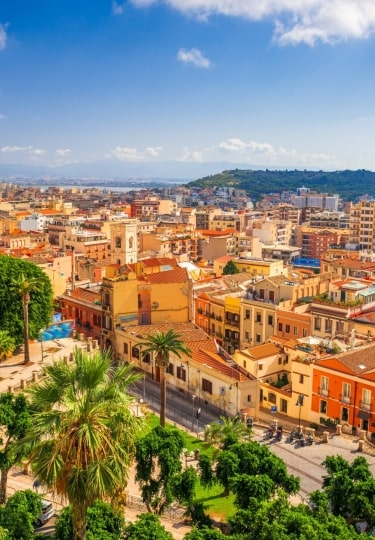Approaching the city from the sea, Cagliari is a precipitous pastel haze punctuated by elegant domes. Arranged around the historic Il Castello neighborhood, it’s a former EU Capital of Culture and chock full of art and superb restaurants, with one of Europe’s best city beaches at its feet.
Sardinia enjoys an arm’s distance relationship with the motherland that mainland Italians find hard to resist. Yes, the Mediterranean’s second-largest island is outwardly Italian, but scratch the surface and you’ll discover that this former island kingdom has its own complex, captivating culture.
This complexity is at its most beguiling in its grand yet compact capital, Cagliari.
Why Visit Cagliari
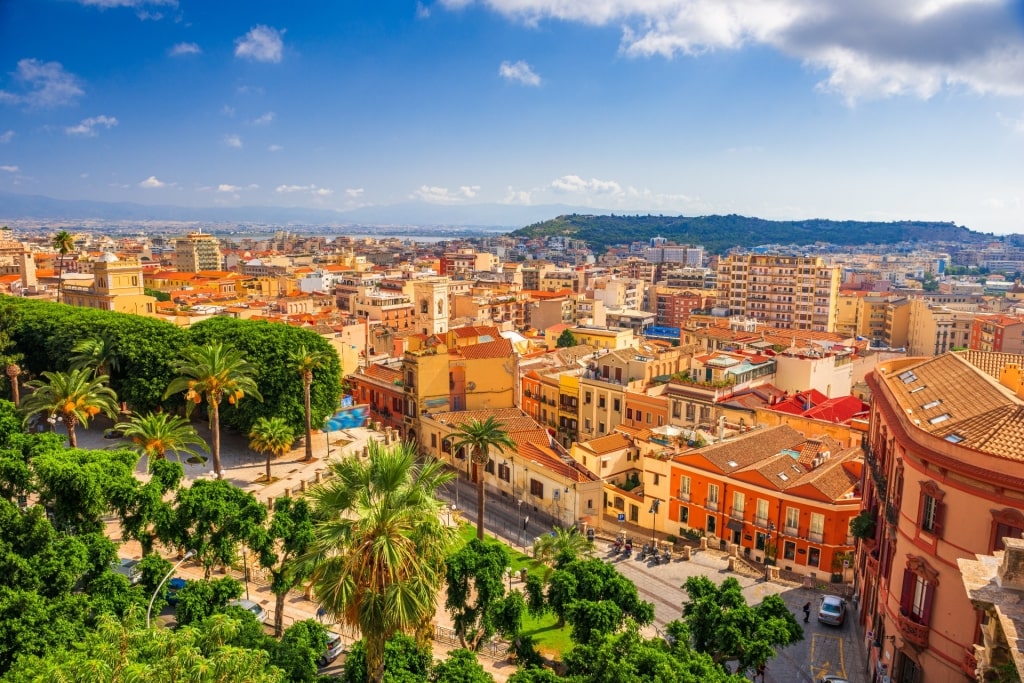
Cagliari
With so much of the island given over to cork-forested mountains and sublime stretches of exquisite coastline, Cagliari, Sardinia, offers a chance for an immersion into the island’s less rustic side.
The Italian coastal town is also a repository of Mediterranean history, a spell-binding blend of Carthaginian relics, Roman ruins, Byzantine influences, Spanish elegance, and Italian flair.
Wander colorful alleyways in the Il Castello quarter, as the bells of the Cattedrale di Santa Maria toll as they have done since the 13th century.
The island’s steady stream of conquerors didn’t just leave behind resilient architecture. The cuisine in Sardinia is its own melting pot of flavors. Browse the spice and herbs on offer at the city’s bustling markets, you’ll often see vivid North African spices besides the broad aromatic leaves of basil and sage.
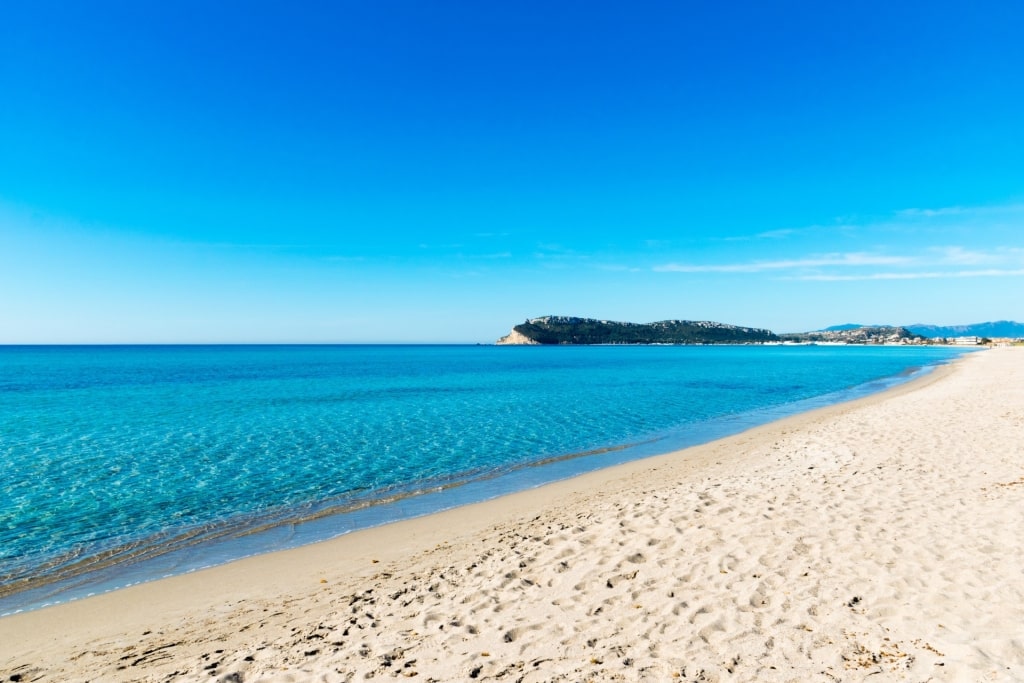
Poetto Beach
And the sensory adventure doesn’t end in the kitchen. The herb-infused macchia scrubland and flamingo-brightened marshes are only a short walk away from Caligari’s urban fringes.
The crystalline shallows of Poetto Beach is the perfect place to cool off as you consider where you’re going to have your next fabulous Sardinian meal.
History & Culture
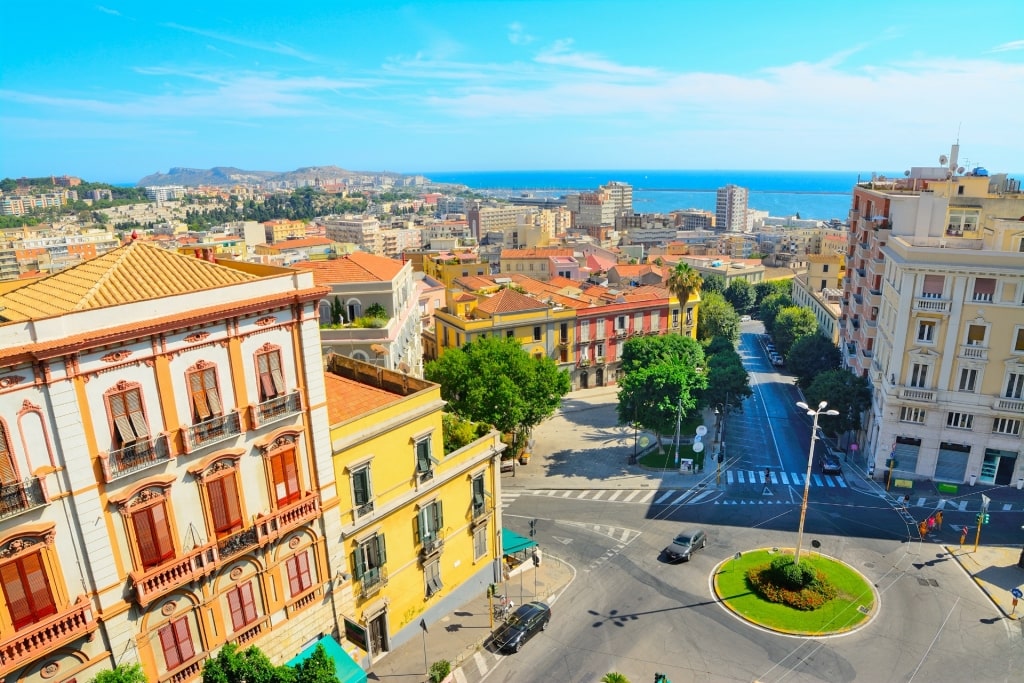
Cagliari
With Sardinia’s strategic position in the Mediterranean, Cagliari has long been a coveted port.
And while the pioneering Phoenicians were the first to establish a settlement there in 8 BC, no doubt their scouts would have witnessed evidence of earlier arrivals. Today we know that Sardinia has been inhabited for between 10,000 and 20,000 years.
Cagliari began to develop further under the ministrations of the Carthaginians, the North Africans arriving several centuries after the Phoenicians. The Carthaginians fortified and developed the city and its sizable natural harbor into a regional hub.
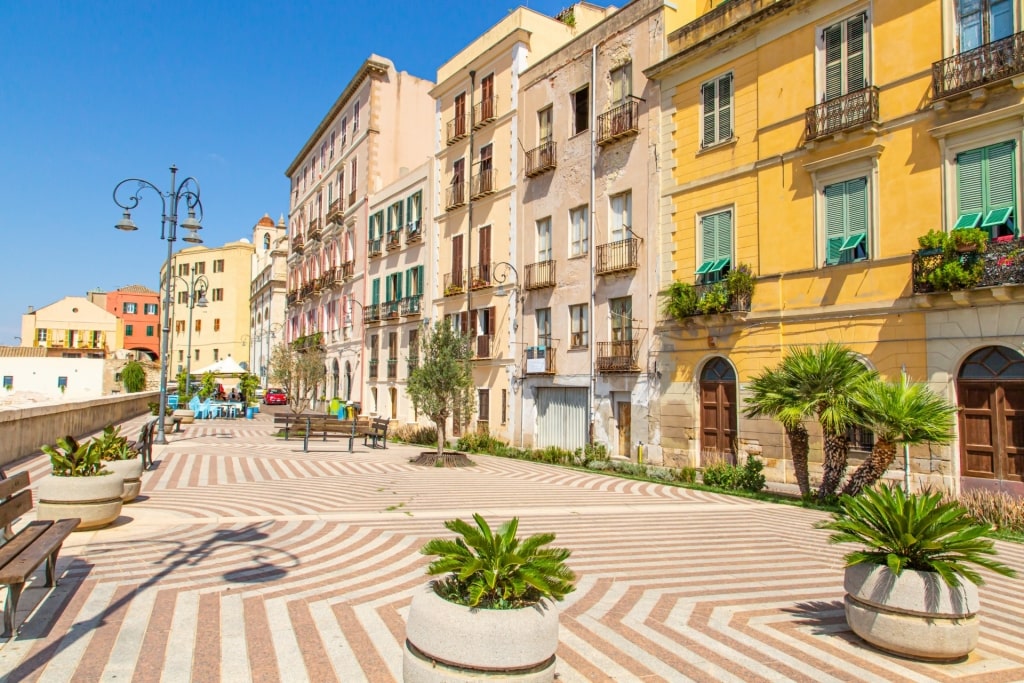
Cagliari
Cagliari’s importance was burnished under the auspices of the Roman Republic, which wrested control from the Carthaginians in 238 BC. When the Roman Empire collapsed, the city—and the island as a whole—experienced waves of conquests after a period of relative stability.
As the various conquerors swept in, Cagliari slowly grew more sophisticated. The Byzantines fortified the city further to ward off barbarian invasions. The Pisans and the Aragonese, ruling in the 11th and 14th centuries respectively, further enhanced the fortifications and developed the pomp of its religious buildings.
Spanish influence remained palpable until the 18th century when the House of Savoy assumed control. This fortress city began to modernize, expanding beyond its robust walls as the island began to be integrated into the nascent Italian state.
Out of the 20th century, and the tumult of World Wars, Cagliari has emerged as the island’s major urban center and a beacon of Sardinian culture. This modern city’s alluring antique heart stands as a testament to a rich, tumultuous 2,500-year journey.
Wildlife & Nature
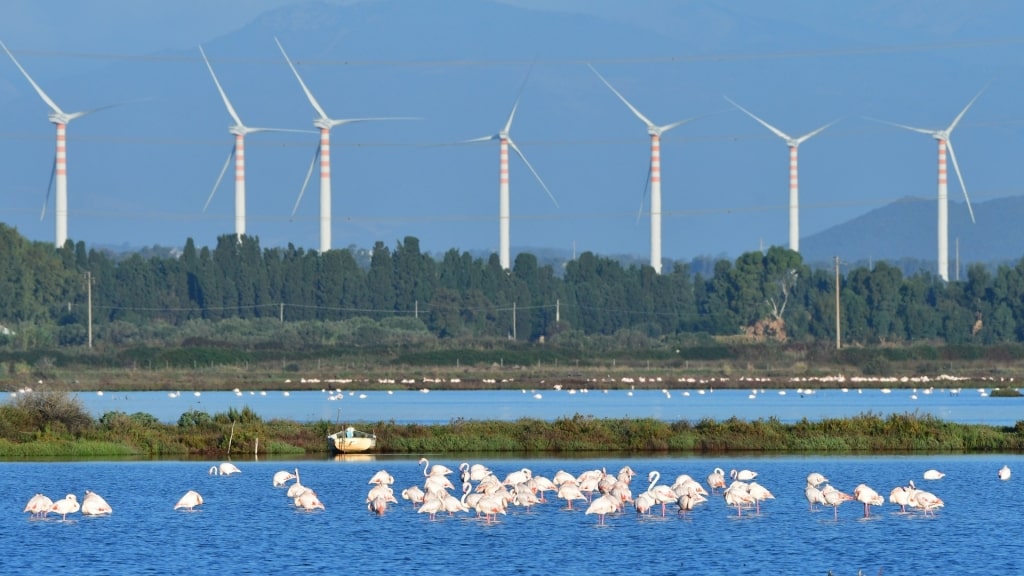
Santa Gilla Lagoon
Cagliari, Sardinia, is situated on a protrusion of land which means it’s nearly encircled by water. One particularly beautiful stretch is the Santa Gilla lagoon, also known as the “Pond of Cagliari”. This rich wetland is a bird-watcher’s paradise and one the best places to visit in Italy with kids.
At 37,000 acres, this is, by any measure, an extremely large pond, catnip to birdwatchers and one of Europe’s most significant wetlands. But for the more casual avian observer, the lagoon’s main draw is the flocks of flamingos that live in this protected wilderness.
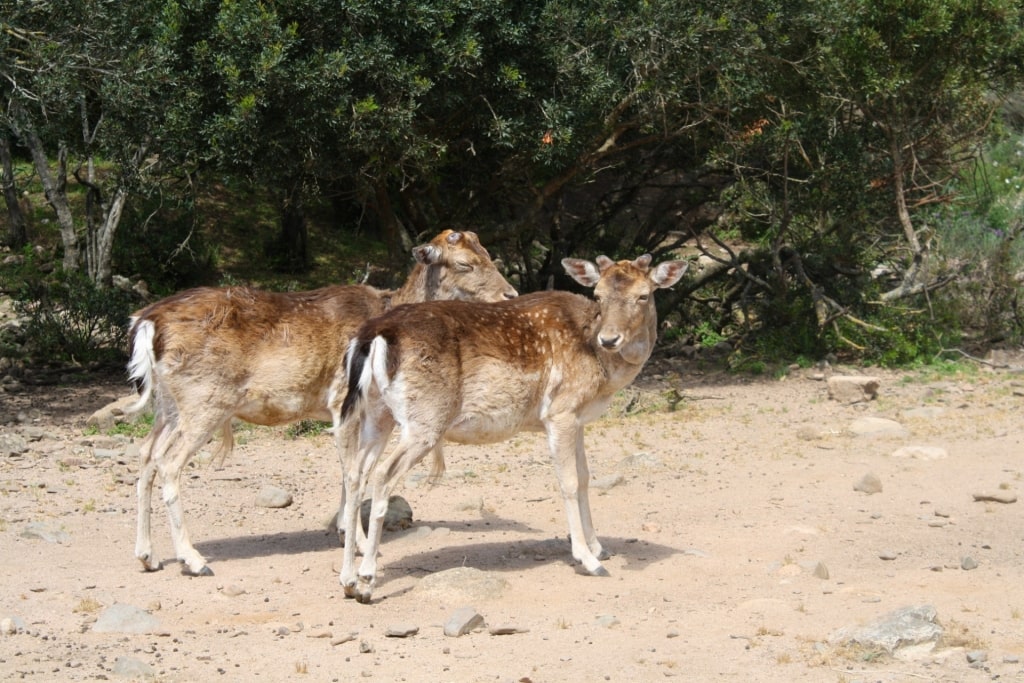
Sardinian deer
Turtles, egrets, and the rare Sardinian deer also patrol this biodiverse area, incongruously adjacent to the city’s airport. Cycle or walk its pathways at dawn or dusk for the best chance of catching a glimpse of some of the area’s most sensitive inhabitants.
The same goes for the 4,000-acre Parco Naturale Molentargius Saline, another favorite bathing pool for the flamingoes that sits behind Poetto Beach.
It’s named for the donkeys (molenti) that used to transport salt from the pans—a Sardinian export industry that stretched back to the Phoenicians.
Read: Why Visit Sardinia
Tips for Visiting Cagliari
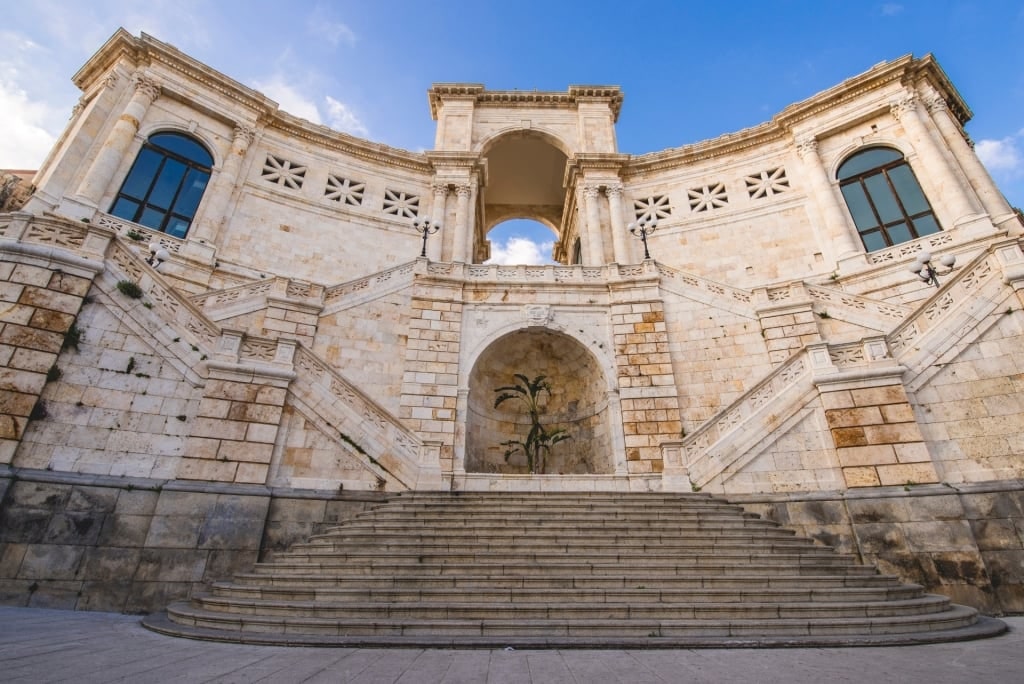
Bastion of Saint Remy
Cagliari is a fairly compact city in Southern Italy, so a short stroll can introduce you to many of its most interesting neighborhoods. However, Il Castello, its historic heart, is unmissable.
This cobbled quarter set on the hill (public elevators can help with the climb) offers panoramic sea views as well as a cluster of Cagliari’s main sights. These include the cathedral, the Bastion of Saint Remy, and the Torre di San Pancrazio.
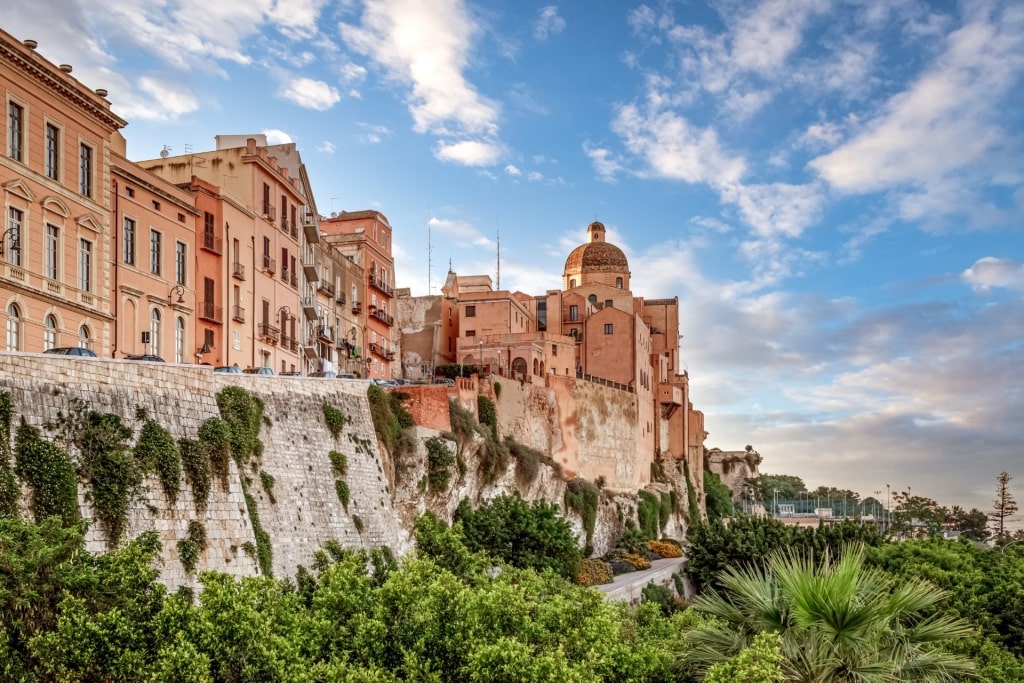
Castello
Besides Castello, there are three other historic districts of the city: the Marina, Villanova, and Stampace. The latter offers a taste of authentic Cagliari, more off the beaten track than the other three and historically an artist’s enclave with a more bohemian vibe.
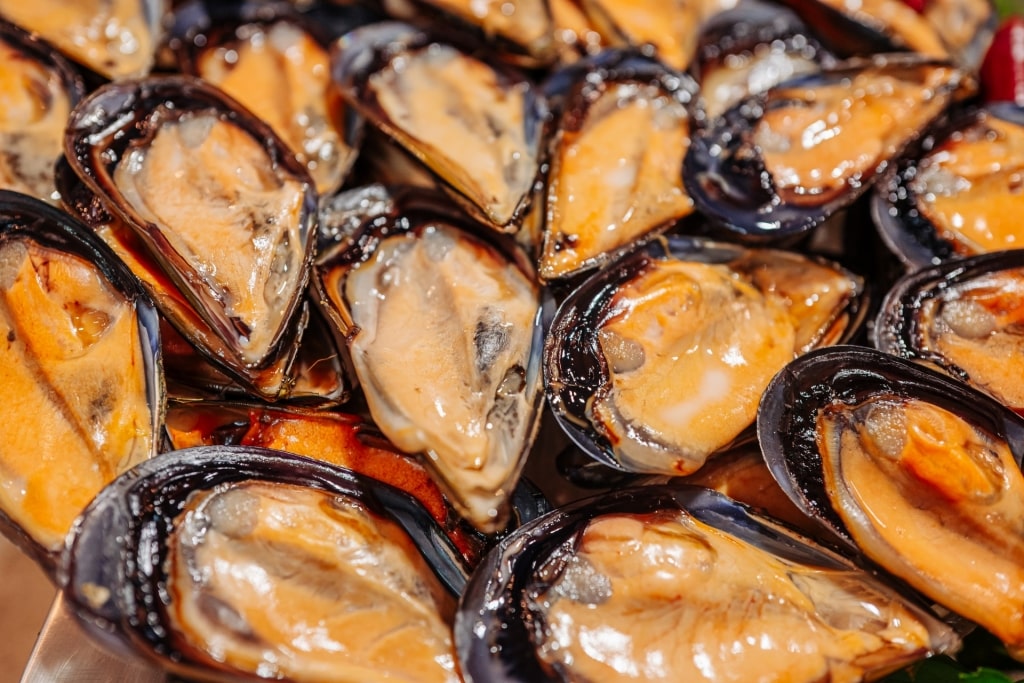
Mussels
Visit the central San Benedetto Market, one of the best markets in Italy, on Via Cocco Ortu for a swift introduction to local social etiquette.
At Italy’s largest indoor food market, you’ll watch the often reserved locals un-self-consciously bartering over the catch of the day, clutching bushels of basil and parcels of honeyed seadas pastries.
However, it won’t be long until you, like the Cagliaritani, have been drawn to the water, either at the Marina with its bars and restaurants or at Poetto Beach.
Things To Do & Attractions
Poetto Beach
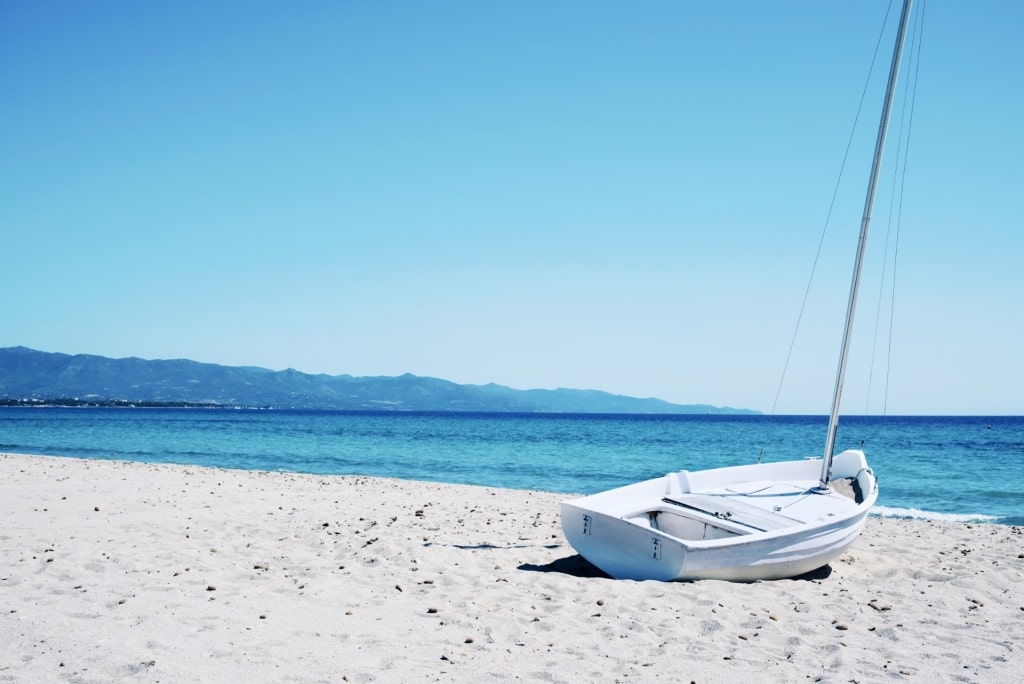
Poetto Beach
With five miles of curving sand, Poetto Beach is an outstanding city beach in Sardinia and Cagliari’s closest.
Beautiful as well as conveniently close to the center, Poetto, one of Southern Italy’s best beaches, is rarely without life. Cyclists and rollerbladers cruise the promenade that divides the beach from the posing flamingoes of inland Parco Molentargius. In the summer, strains of rock music with Italian lyrics float on the warm evening breeze.
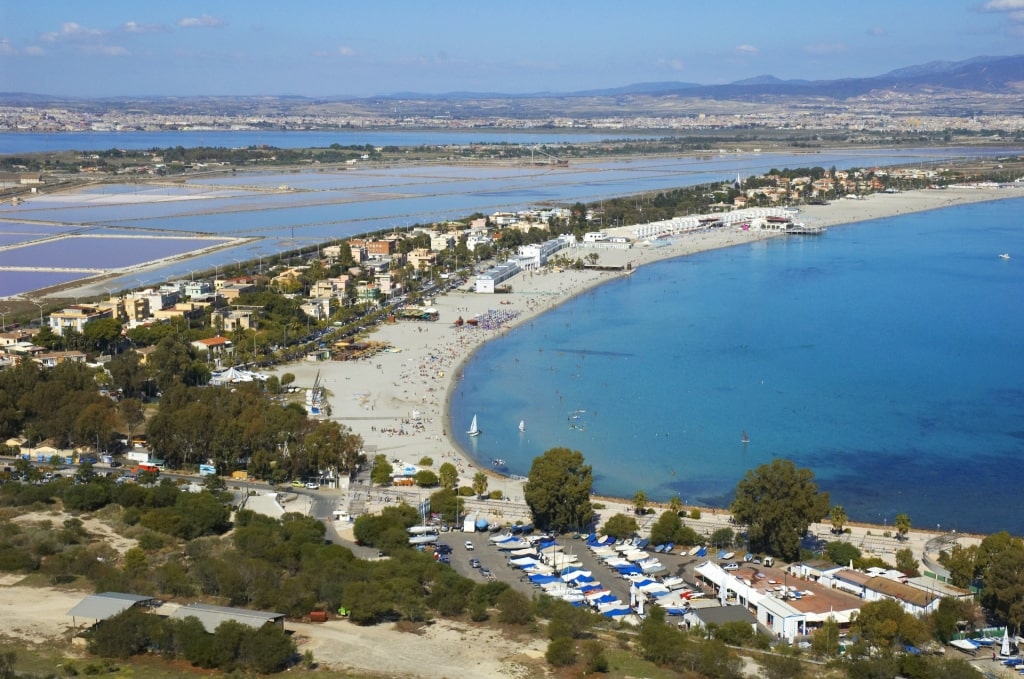
Poetto Beach
Its epic shallows are ideal for families. But there’s enough space for everyone, even the kite surfing school at the southern end. A good selection of beachside bars and restaurants line the beach, although the eggplant sandwiches at the Baffo Snack food truck have attained legendary status.
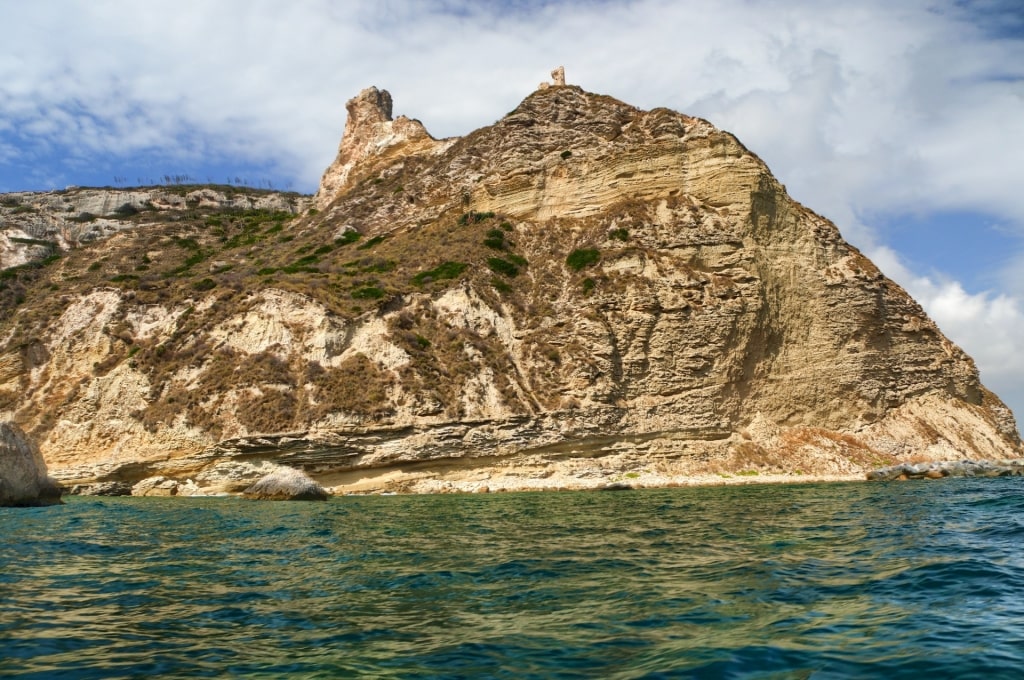
Sella del Diavolo
Try La Palmette Beach Club if you’re after something a little more sophisticated with a view of the azure Gulf of Quarto. Work off your lunch with a leisurely dip in the Tyrrhenian, or hike up to the Sella del Diavolo (the “Devil’s Saddle”), one of the most stunning natural wonders in Italy.
Cathedral of Santa Maria
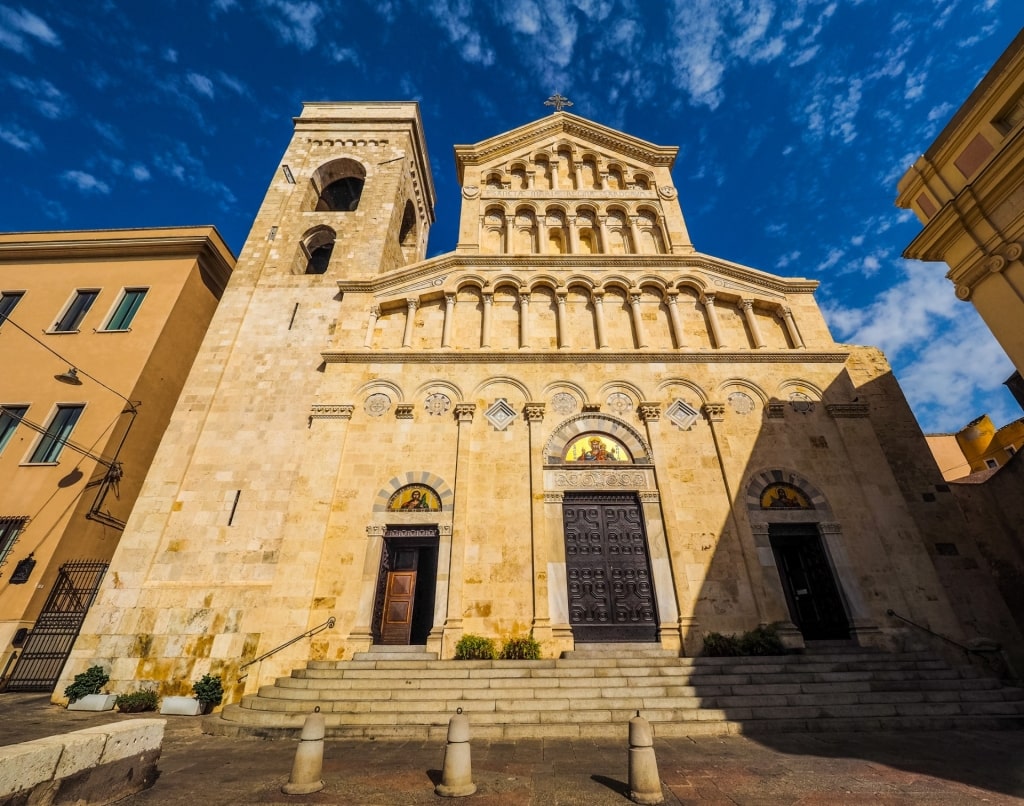
Cathedral of Santa Maria
Originally constructed in the 13th century, the Cathedral of Santa Maria has long been a central piece of the Il Castello quarter. Despite a plethora of modifications, facelifts, and architectural tinkering over the years, it today stands as a harmonious marriage of Pisan-Romanesque, Gothic, and Baroque styles.
Within its hushed and relatively muted interior, treasures abound. You’ll see intricate carvings on the altar, golden 15th-century triptychs, and even marble lions.
Descend beneath the presbytery to discover the Shrine of the Martyrs. This marble-inlaid chamber contains the remains—or relics—of nearly 200 martyrs. You can try to decipher the reasons for each martyrdom from the bas reliefs on each niche. Pay a few extra euros to ascend the Duomo’s bell tower for views across the rooftops.
San Pancrazio Tower
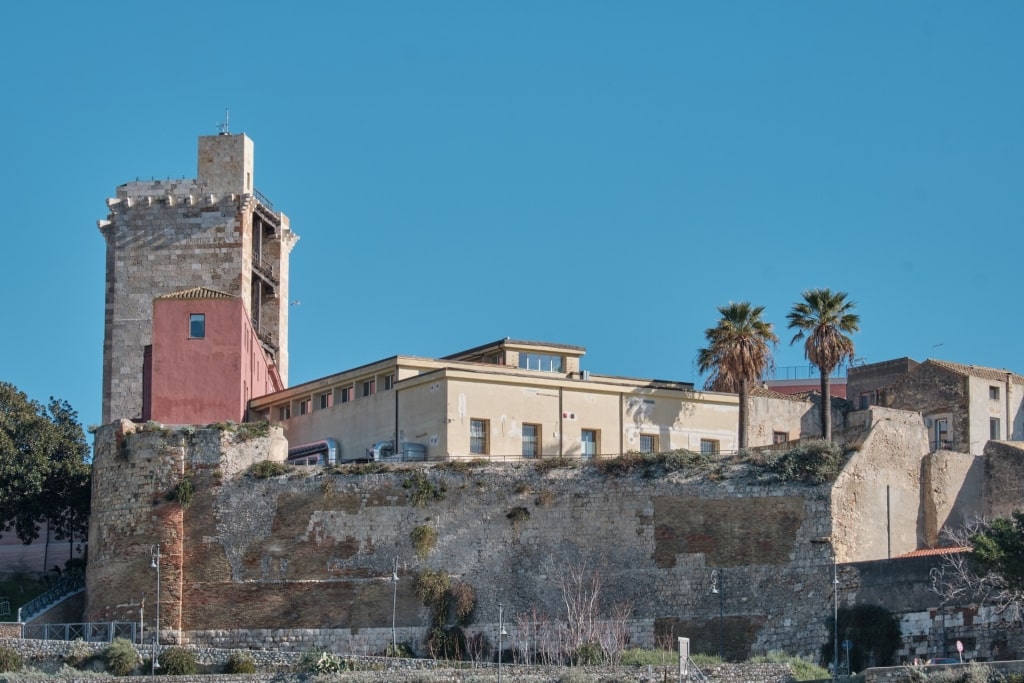
San Pancrazio Tower
Another iconic element of the historic Castello quarter, the stout San Pancrazio Tower commands a bluff to the north. Constructed by the Pisans in 1307 to thwart Aragonese invasion plans (ultimately unsuccessful), the tower, with its 12-foot thick limestone walls, was certainly built to last.
Along with the Torre dell’Elefante, it was constructed as a symbol of Pisan prestige. It’s possible to ascend the tower, and on the way up you’ll note its many repairs and upgrades that act as a visual history.
At the top, expect selfie-takers and miraculous panoramas over the city, the coastline, and the island’s rugged interior.
Bonaria Sanctuary
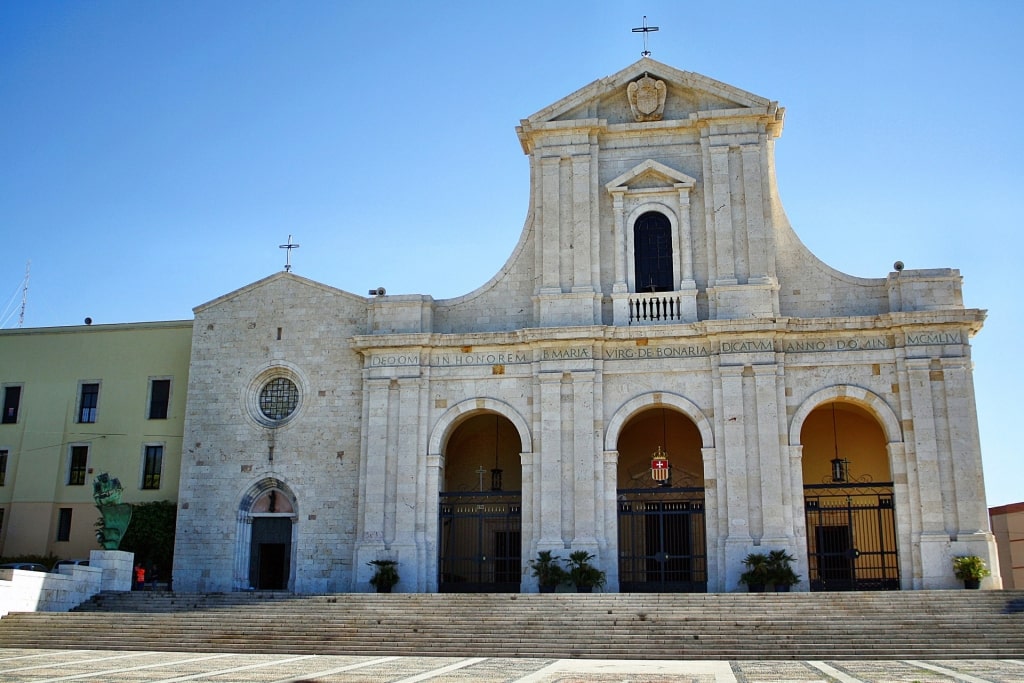
Bonaria Sanctuary
The Bonaria Sanctuary, or Basilica of Our Lady of Bonaria, is a revered religious landmark in Cagliari, Sardinia. The name “Bonaria”, meaning “Fair Winds”, stems from a legend: sailors en route to Cagliari began to throw their cargo overboard to save themselves in a storm.
When one crate landed on the water, the storm stopped. When the crate reached shore and was opened, it was discovered to contain a statue of the Virgin Mary and Christ Child.
This miraculous statue, housed within this neo-Gothic basilica (attached to an older 14th-century Gothic church), acts as a huge draw for pilgrims. With its remarkable views over the city and the harbor, the sanctuary is also a big draw for wedding parties. An average of 300 blissful unions happen here annually.
Parco di Monte Urpinu
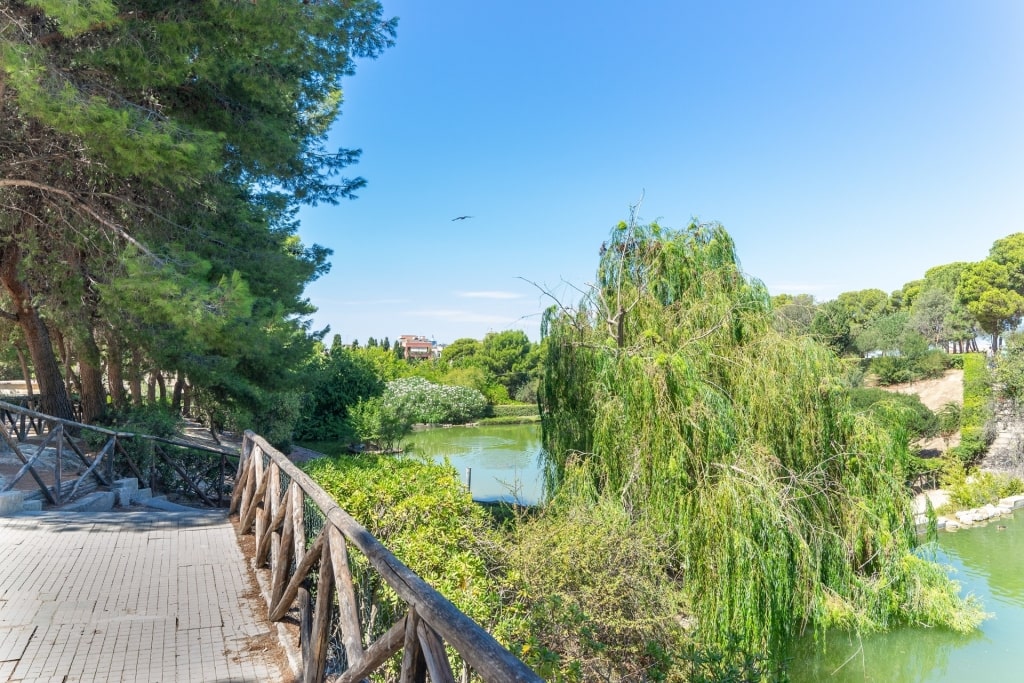
Parco di Monte Urpinu
The lungs of the city are found in Parco di Monte Urpinu. A 79-acre expanse backing onto the salt pans, the park offers a sanctuary from the urban verve. Wander the pathways swathed in the scent of the Aleppo pines that have flourished here since the park’s founding nearly a century ago.
You may be shocked out of your reverie by the haunting cry of the peacocks. They’re one of a number of interesting inhabitants that can include flamingoes taking a time-out from the salt pan.
Look down upon their pink multitude from the Viale Europa, an outlook on the southeast side of the park that offers arguably the best panoramas over Cagliari.
National Archeology Museum
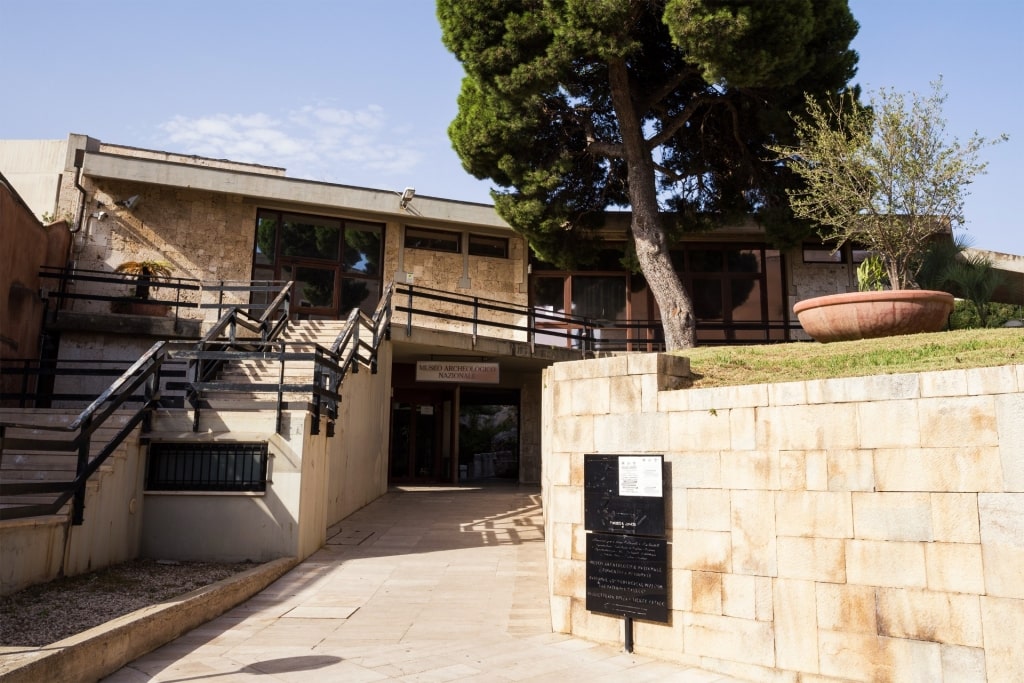
National Archeology Museum Photo by Unukorno on Wikimedia Commons, licensed under CC BY 4.0
Located in the Il Castello district, on Arsenale Square, the National Archeological Museum gives visitors a wonderful deep dive into nearly 7,000 years of the island’s history.
Discover the artistic and cultural treasures of the Nuragic civilization that ruled Sardinia for a swathe of the Bronze Age. Highlights include the Nuragic bronzes or bronzetti—diminutive statuettes depicting ritualistic scenes. If you’re planning a trip to see a site like Su Nuraxi, the museum makes for an essential introduction to this period.
It’s Italy, so there’s a wealth of Roman artifacts, as well as a fascinating section about the Phoenicians. To add some color, there’s also a range of 19th-century wax anatomical models, and the reconstructed skeleton of another former island dweller, the pygmy mammoth.
Su Nuraxi
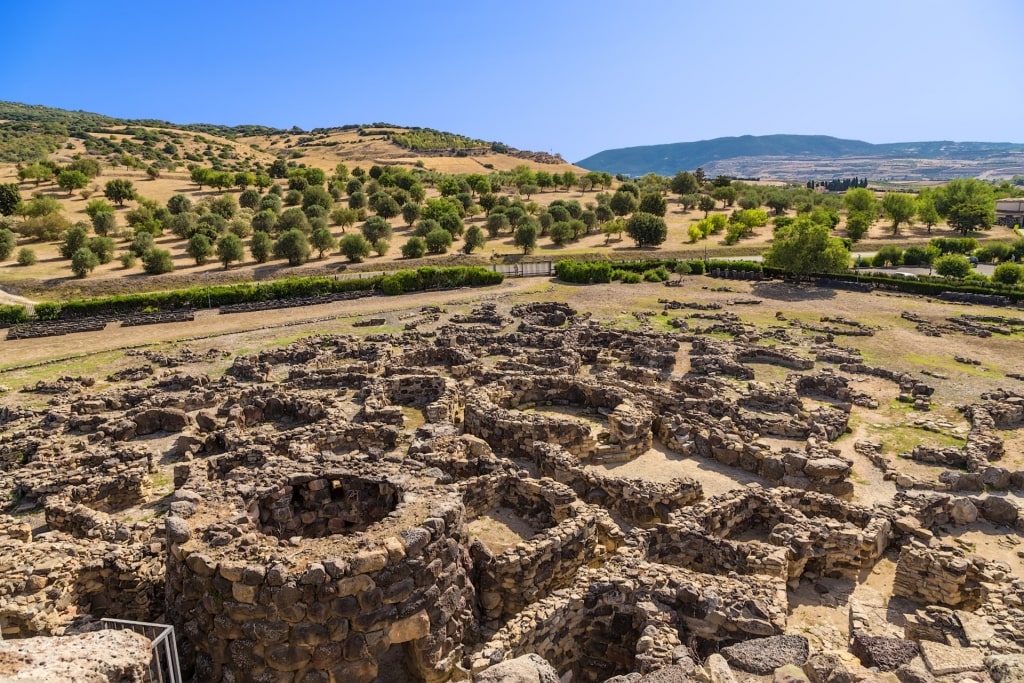
Su Nuraxi
Located just a 45-minute drive from Cagliari, Sardinia’s sole UNESCO World Heritage Site Su Nuraxi di Barumini transports you to the Nuragic Bronze Age.
You’ll discover the island’s unique Nuraghe (or “nuraxi” in Sardinian) structures—conical buildings that served as defensive fortresses. Huge blocks of basalt were used as building materials, reminiscent of the Incans in Peru.
These megalithic “beehive” edifices that Sardinia is known for can stand as tall as 50 feet. As the Nuragic civilization didn’t leave any written records, it’s helpful that admission to the site comes with an enlightening guided tour every half hour.
Roman City of Nora
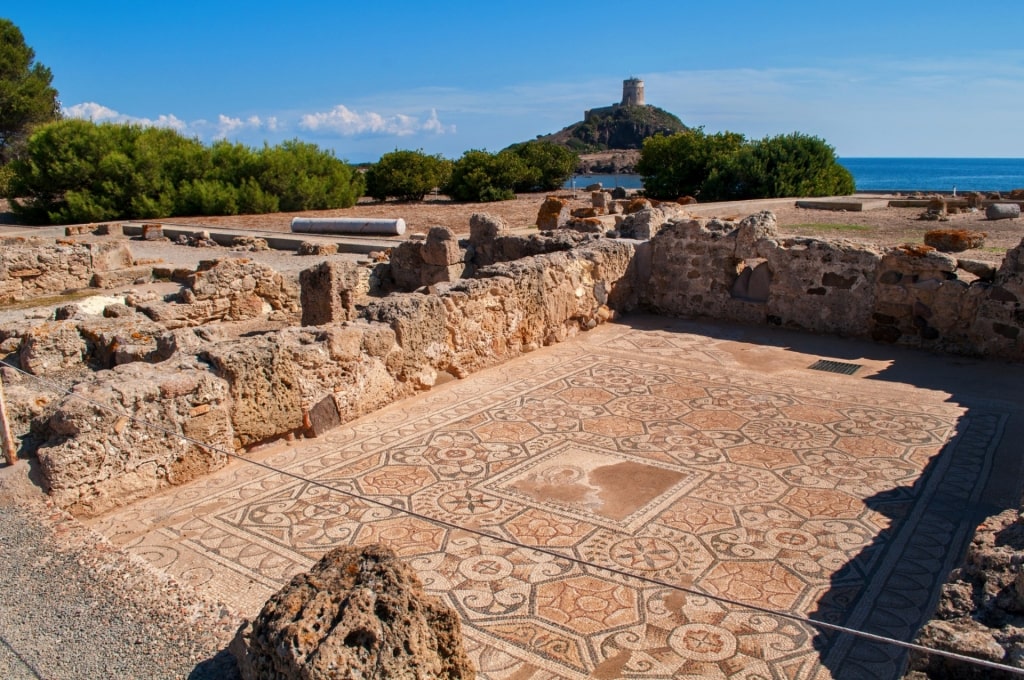
Roman City of Nora
About half an hour south of Cagliari lies the remains of the ancient city of Nora. Comparable to Ortigia in Sicily, where layers of history visibly intertwine in the architecture, Nora is a fascinating tapestry of Nuragic, Phoenician, Carthaginian, and Roman legacies.
In Roman times, all roads on the island led to Nora and its renowned thermal baths. Today, the archaeological site offers exquisite floor mosaics, while the museum’s exhibits paint a vivid picture of life for its once 8,000 residents.
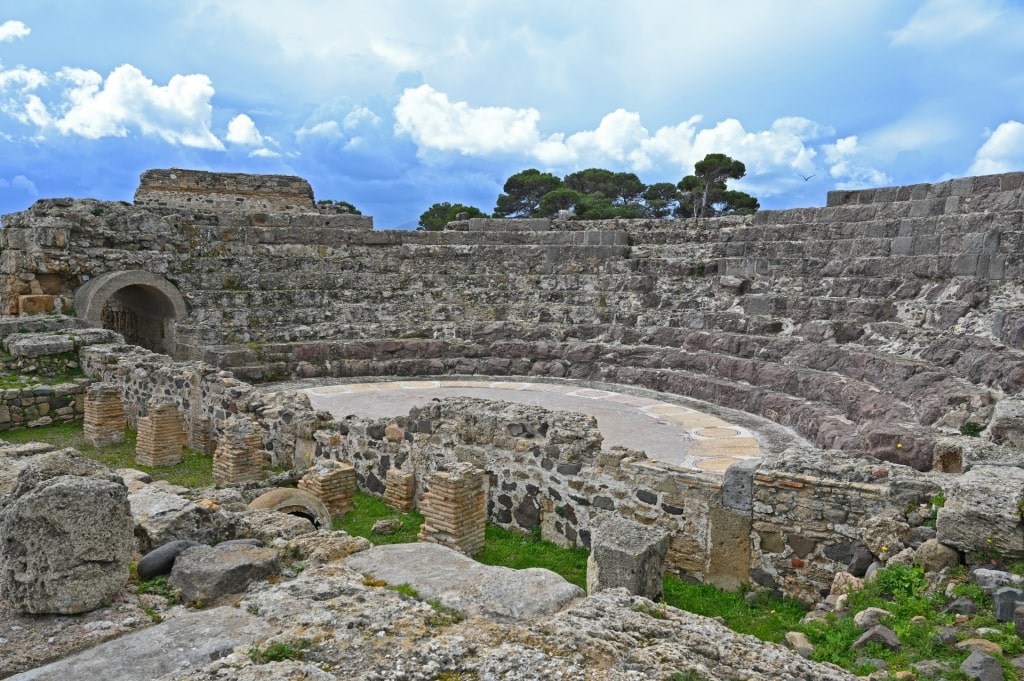
Roman City of Nora
While the bathing regime may have dropped off at Nora, its seaside Roman theater still hosts concerts in the warmer months. Snorkeling off of Nora takes cultural immersion to a new level, with submerged mosaics and even Roman roads on the sea floor (now trafficked only by starfish and urchins).
Food & Drink
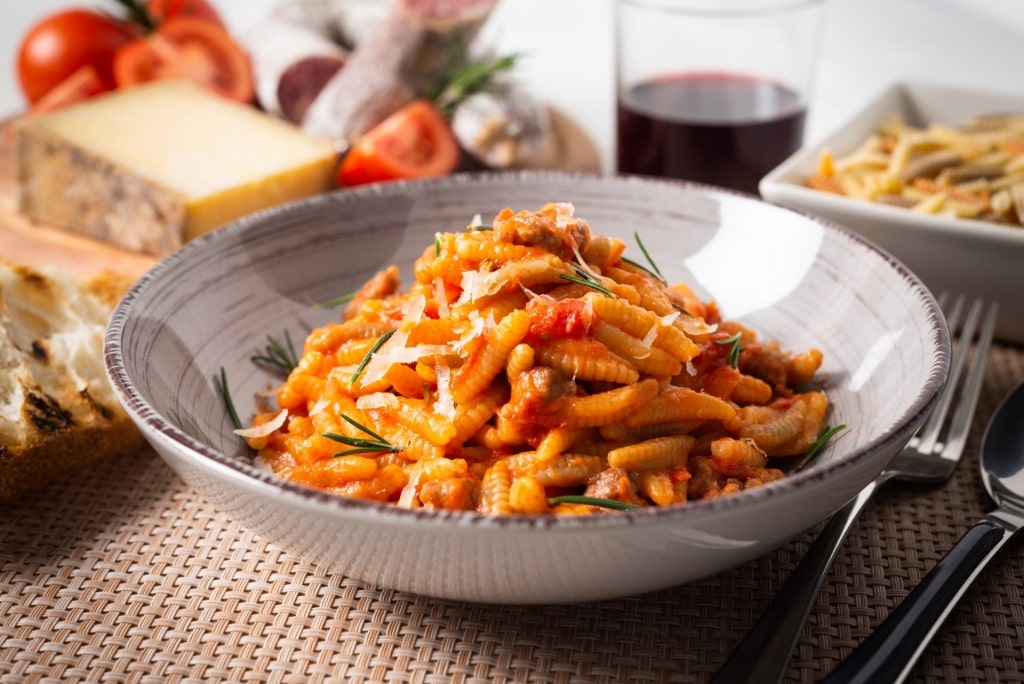
Malloreddus pasta
As befits an island with a huge sheep population rambling beneath the oak-thrown shade of the hinterland, much of Sardinia’s menu is seafood-based with plenty of sharp, sheep’s milk pecorino sardo thrown in for flavor.
Its kitchens serve up regional treats like malloreddus pasta (the island’s take on gnocchi) often mixed with a rich sausage and fennel ragu. Threads of saffron brighten seafood soups filled out with couscous-like semolina fregola, while only the traveling gourmet will attempt punchy bottarga—a cured fish roe that Sardinians adore.
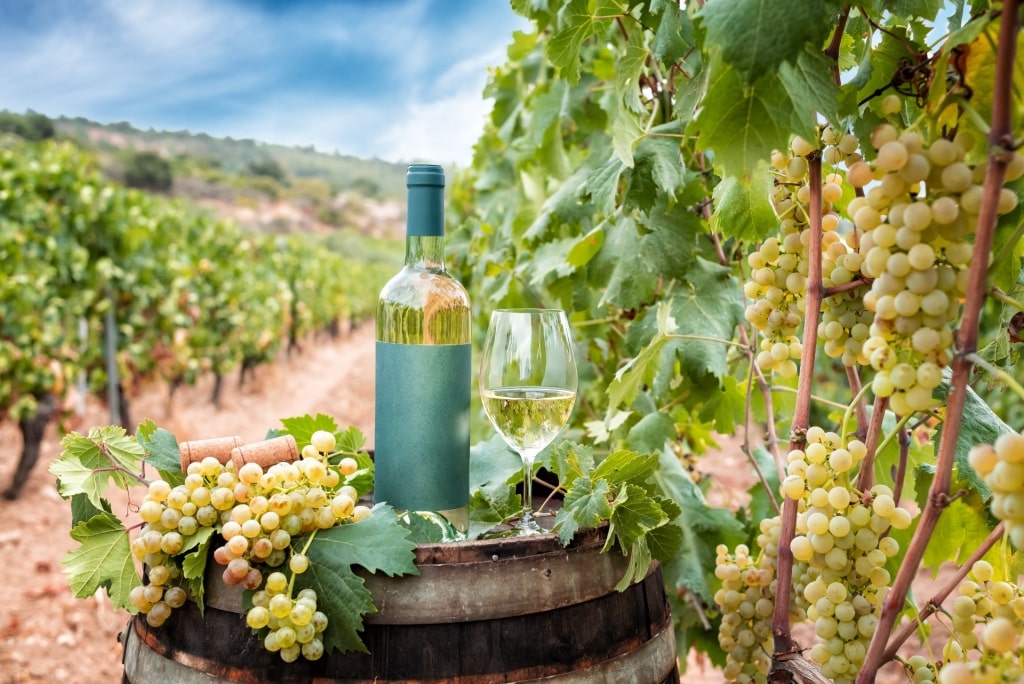
Vermentino wine
Happily, if you have an unhappy bottarga experience, it can be swiftly washed down with one of the island’s superb wines. Vermentino, Sardinia’s only DOCG grape variety, produces a white wine that’s incredible with seafood dishes.
Nuragus is another white variety, introduced to the island by the Phoenicians—try it at Ristorante Cavallino della Giara found close to the Su Nuraxi site. Round off the meal with a sweet glass of Vernaccia, a fortified wine that’s not unlike sherry and that’s nearly impossible to get anywhere other than Sardinia.
Best Time to Visit Cagliari
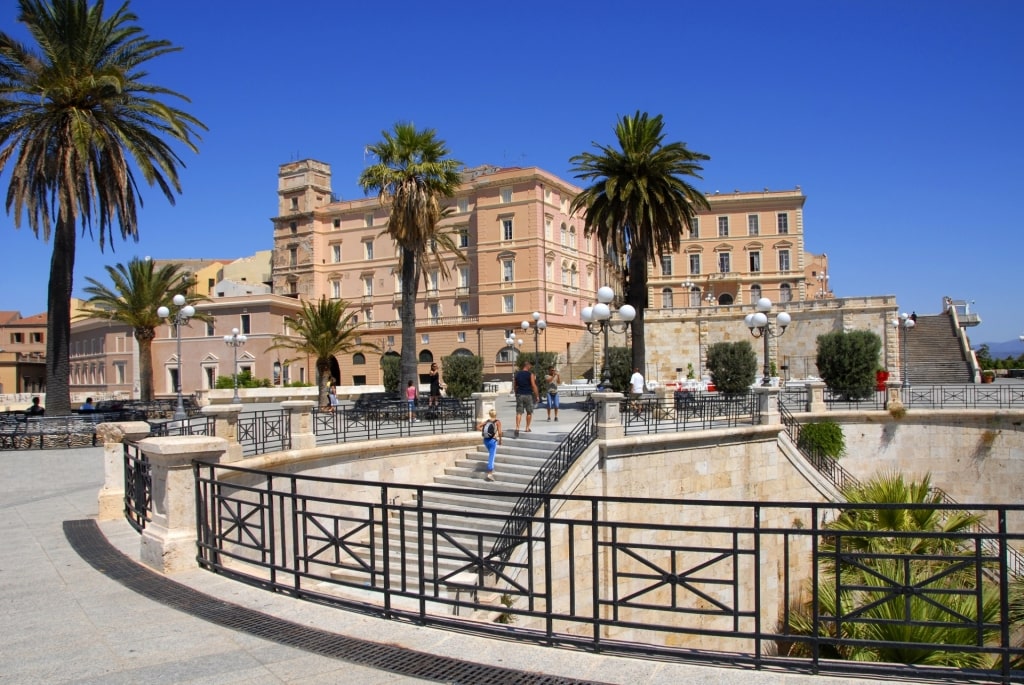
Cagliari
To experience pleasant weather, fewer crowds, and warmer sea temperatures, late spring and early autumn are superb times to visit Cagliari, Sardinia.
In spring, expect sunshine and mild temperatures ranging from 55°F to 75°F. The turquoise shallows of Poetto Beach begin to warm up, averaging around 62°F in April and traveling towards 70°F by June.
Of course, summer is peak tourist season, and the city pulsates with life. While the clement weather hovers between 70°F and 90°F, music concerts take place on the beach and at Roman theaters. The sea is invitingly warm, averaging around 75°F.
Arrive after August’s vacation peak, and you find that conditions are still extremely inviting. Daytime highs still reach 80°F. Outside of the wet cobbles on winter days, Cagliari’s Mediterranean climate remains inviting for most of the year. Why else would the flamingoes nest here otherwise?
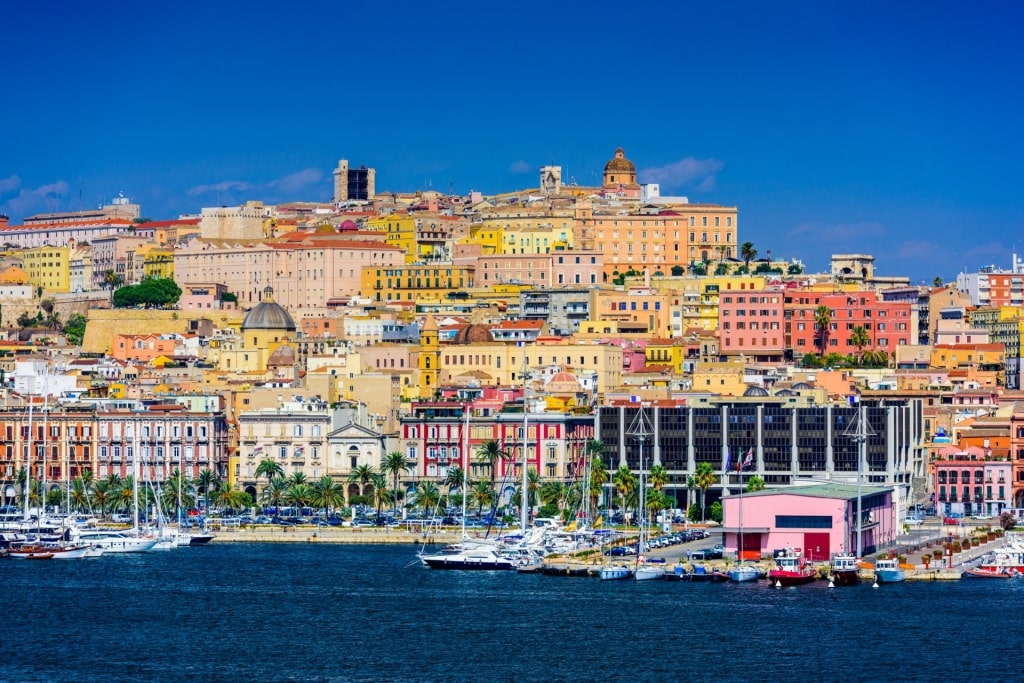
Cagliari
Visit Cagliari, Sardinia, and explore the city’s historic, cultural, and culinary heritage on a spellbinding cruise to Italy. Browse our cruises to Cagliari and book a premium cruise vacation to this stunning country today.
